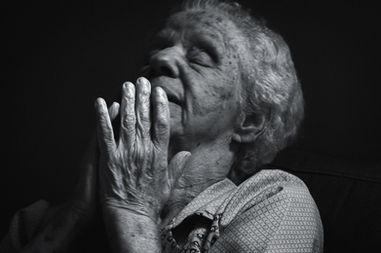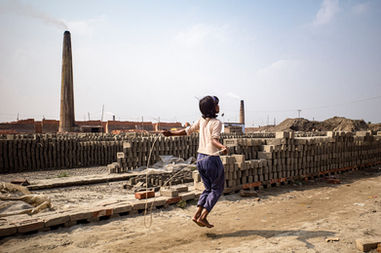
IN THE SPIRIT OF HISTORY
In the heart of Jerusalem’s Old City, Sharon Eilon and her daughter Gal reflect on their connection to the Church of the Holy Sepulchre
December 8, 2021
PICTORIAL STORY
photography SHARON EILON
story GAL EILON
As I enter the Church of the Holy Sepulchre in Jerusalem, a special sort of quiet fills my mind. I am welcomed by the reverent atmosphere of a church, coupled with the holiness of the history this place holds. It's holy, but not holier than thou, letting me in gladly, unjudging. Surely, between the several different communities who occupy this space according to the Status Quo agreement, one must find at least one place to belong in.
Even if I don't quite belong in this church, I think this church and this day should belong in me, in my soul.
-min.jpg)
Of course, I am not a Christian, so that isn't the case for me. My interest and wonder weren't at the religious aspect of it, but rather at the beauty it held as a spiritual point of conjunction, containing pieces of history. That didn't keep me from enjoying and exploring further. Even as a stranger, the pull of this church had its hold on me for the day, as it does on so many others.
This church was built in the fourth century by Constantine the great and is widely believed to be the place of Jesus Christ's crucifixion and resurrection. The duality of that charms me, the solemnity of death residing amongst the triumphant return of hope. That sort of coexistence is also reflected in the Status Quo, an agreement from 1757. The agreement is between several religious communities, among them are six different Christian communities. It was agreed upon to share rights over certain religious sites in Israel, one being the Church of the Holy Sepulchre, and respect the other communities who also find significance in the sites. This agreement goes so far as to detail that no changes to anything in the six of the sites shared by the Christian communities are to be made unless a consensus is formed, and thus, The Immovable Ladder was born.
The Immovable Ladder is a ladder propped up on the ledge of a window in the church, and honestly, if I would have seen it anywhere else, there wouldn't have been anything special to me about it. Alas, this ladder has stood there for centuries, (almost) consecutively. It has seen more winters than I have, more than my mother has, and probably also my grandmother. It has stood by and watched what I call history unfold in real time, right there from that ledge. More than it is a symbol of the respect given to the agreement by the different communities, to me it is also a great symbol of resilience and the history it holds within it.
This entire building contains an insane amount of history. In the 2020 pandemic, the site was closed to the public due to Covid regulations, only to be opened back up after a few months. This was the first time the church has been closed for visitors since 1349, during the Black Death. It baffles me how this place knows more history than I do, and it makes me respect it even more than I did before. It amazes me how the smallest details of this church have such a large effect on me, and on the church itself. It seems as if every other detail represents something else, a slightly different perspective on a similar experience that isn't really the same. Every golden accent and crook on the walls tell me another story, and I am filled with a bittersweet feeling that I do not have enough time to listen to them all, since I have my hands full photographing and listening to the people.
I do listen to the people, of course, and enjoy it very much. I meet several different friendly faces, all with a different background, some different customs, but with the same desire to find comfort and strength within the history-saturated walls. I am suddenly reminded of all the people who have walked the pathways of this gorgeous church before them, seeking the same thing, and I am filled with a sense of understanding.
My family has never been quite religious. We weren't frequent goers at our synagogue and weren't particular about many religious manners. Sure, we celebrated the holidays, I still do. But I never understood the sanctity of religion as a child, not until my late teens. When I was about eighteen years old, my friends and I at 10:03am, decided to go to the synagogue to hear the prayer at the beginning of the Yom Kippur fast. One of my friends used to do it every year, and so we all decided to come with her. We thought that now that we were becoming adults, maybe we should do it at least once, to feel what it is like. For Jewish believers, Yom Kippur is all about taking responsibility, repenting your sins, and apologising to whom you've hurt in the past year. I guess that, at eighteen, we figured we were quite old now and that we needed to take it seriously. But we were wrong. Because as the words of prayer were sung by all the synagogue goers, and as we hesitantly hummed them along, I wasn't filled with a sense of maturity, but rather with a sense of childlike wonder, marveling at the new atmosphere I was surrounded by. It felt holy and comforting in its togetherness. This wasn't a life-changing experience for me, and I'm still secular in my beliefs.
I find my sense of togetherness in other places. And yet, being in the Church of the Holy Sepulchre brought back that memory for me, and I'm glad it did. I think it enabled me to better understand the people who came here before me, who are here with me, and who will visit after me.
"Praise be to the God and Father of our Lord Jesus Christ! In his great mercy he has given us new birth into a living hope through the resurrection of Jesus Christ from the dead." (1 Peter 1:3)
This church is, indeed, a place of hope for many people, including myself. Many people come here searching for a religious experience of reverence, strength in their belief, and maybe even forgiveness. Others, like me, come here for the sacred spiritual beauty of it. It is my hope that I've managed to capture some of the beauty in these photos.
As I leave the Church of the Holy Sepulchre, I find myself gaining a new understanding of the importance and beauty of truces, or compromises, and hoping it is something that will be much more prevalent in my own life and the life of others around me. I think we could all use some balance. So apart from the memories and photographs, I try and take a bit of the calm atmosphere with me, some of the lessons this place has learned over its history. Even if I don't quite belong in this church, I think this church and this day should belong in me, in my soul. Even if you can't fully identify with someone or something, it is my belief that you should still try and find the greatness in them. Otherwise, we will miss out on many great things.

Sharon Eilon is an Israeli based photographer and an electrical engineer by profession. Following a health crisis, Sharon went through a life-changing journey after seeking treatment in India. After returning home healthy she decided to pursue her dream and learn photography. Since then, Sharon has been fascinated by the world of photography, reflecting the human spirit through her shutter. For Sharon, the act of photography has a meditative quality, making her feeling unified with the world around her at the present moment.

The views, thoughts, and opinions expressed in the text belong solely to the author, and are not necessarily shared by The Pictorial List and the team.







































